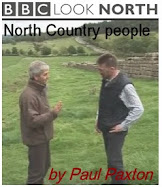It is important, before considering the evidence for the prehistoric built environment, to consider how, and in what circumstances, it was gathered.
An archaeological excavation is not a double blind clinical trial of a new drug; it's not that vital to society, and is resourced accordingly. Also, it’s just not that objective. Archaeological excavators are not scientists, and excavations are not experiments: they cannot be repeated because, ironically, excavation actually destroys much of the evidence it is studying.
The nature of an excavation and the resulting report will be dependent on the availability of financial and human resources, as well as the time allowed for the process. An archaeological excavation may be part of a research strategy planned over many years, or it may take the form of an emergency salvage operation as a result of a chance discovery on a building site. However, it not simply the quantity and quality of resources that influence the outcome of an excavation; even circumstances such as the weather and ground conditions may be significant factors.
The archaeological sites of interest to this study are usually found in rural areas and most have been ploughed, and this will have destroyed all but the deepest features. In terms of the built environment, it is usually only the foundations, in the form of postholes, which remain to be excavated. Floors are very rare, and frequently not a trace of the exterior walls can be found.
When this type of site is excavated, the layers of disturbed topsoil are removed, usually with a machine, such as a JCB. What is left is a relatively undisturbed subsoil layer into which features have been dug in the past. The undisturbed subsoil is referred to as ‘natural’. The features archaeologists are looking for contain soil different from the surrounding natural and can be distinguished by variations in colour and texture. This is because, when hole is dug into a soil, which may have been undisturbed since the Last Ice Age 10.000 years ago, even if you fill it straight back in again, the structure of the soil in the hole will be different from the surrounding undisturbed soil. For example, the disturbed soil will be less compact, which allows it to retain more moisture, and may therefore appear darker than the natural. If what is put back in the hole is not soil, but rubbish and organic material, for example, then the feature may be quite different in colour and texture from the adjacent soil.
Trowels are used to give the soil a clean fresh cut surface so these variations will show up better. Identifying small variations in soils is probably the most important skill of a field archaeologist, central to the process of archaeological excavation. It is not a skill that can be easily taught in a classroom, and is usually acquired through experience in the field. Once the topsoil has been removed, how easy or difficult it is to find the features will depend on the type of subsoil. For example, identifying brown soil features in white chalk subsoil is relatively straightforward compared finding features on gravel or on clay subsoil, which may naturally vary in colour and texture.
Having found the features, what happens next will largely depend on the available resources. In an ideal world, all features would be fully excavated and recorded in plan and section. However, in a reality where resources are usually limited, features may be left unexcavated and only their position on the site plan recorded.
This leads us into the complex area of how to ‘sample’ an archaeological site, which in turn depends on what questions you are seeking to answer. Archaeologists will often be aware of a site's existence through aerial photography. Large, ancient disturbances in the natural, such as ditches and large pits, result in slight differences in crop growth or topography that are apparent from the air. Thus, with these ‘cropmark’ sites, it is logical to target the largest most evident features first. In addition, features such as ditches and rubbish pits usually take priority because they are most likely to contain the finds that are used to date and interpret the site. Postholes, unless they are clearly part of a recognised structure, will not necessarily be regarded as priority.
Once the excavation is complete, attention turns to post-excavation and to the production of an archaeological site report. The archaeologist in charge of the site will be usually write the description of the features and offer an overall interpretation and summary of the site. In addition, specialists working on the finds and samples recovered from the site will usually write relevant sections of the report. The form the final report will take depends on the nature and significance of what has been found and, again, the resources available. Some reports warrant publication in a traditional sense, but less important reports may well be lodged as ‘grey literature’ in specialist archives.
This briefly accounts for the circumstances by which postholes and other evidence of the prehistoric built environment are discovered and brought to the attention of a wider audience. In reality, i.e., a world of limited resources and more pressing priorities, it is only those postholes that form part of a recognised building or structure that will ever warrant any real attention.
So how do archaeologist recognise structures and buildings from the collection of portholes and other features?
ROGUECLASSICIST’S BULLETIN ~ December 12, 2025
7 hours ago




















0 comments:
Post a Comment